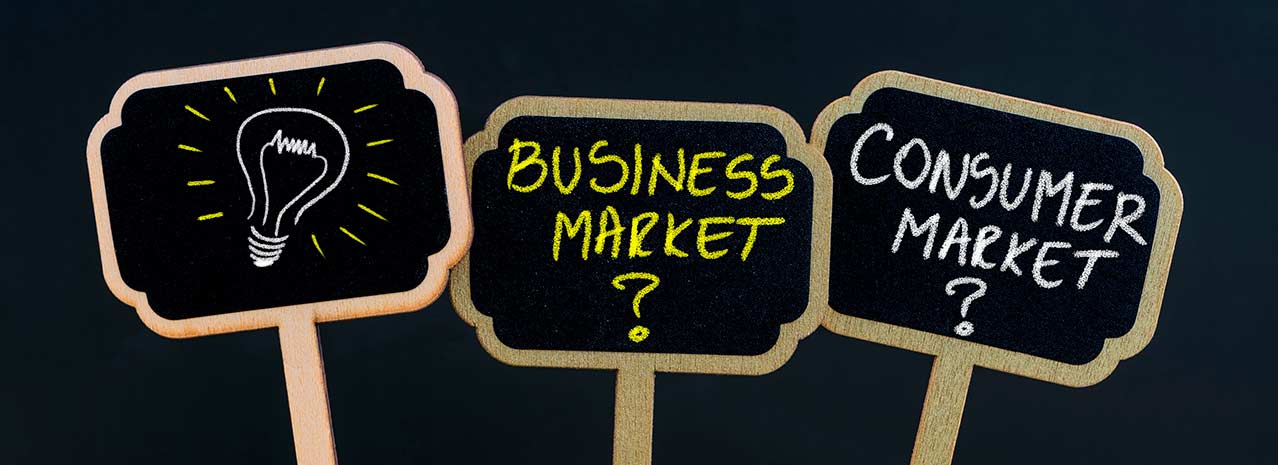Digital Marketing
For B2B Brands
Digital Marketing for B2B brands is a challenging idea as best practices in the industry are constantly evolving. Additionally, B2B leads are difficult to convert into customers because of their long and considered buying process.
Introduction
A few years ago, marketing was completely different to what it is today. The digital era has taken over the world sooner than anybody could foresee, and B2B industries have experienced a substantial impact as a result of this shift.
Why should this concern you? Because adapting your approach and using updated marketing practices is crucial to get a high ROI from your efforts.
In this article, we’ve compiled everything you need to know to plan and execute an effective B2B digital marketing campaign. You’ll understand the big-picture of how modern digital marketing works, and how to leverage it to grow your B2B brand.
We will help you take an informed approach so that your marketing activities drive significant traffic, high-quality leads, and conversions.
Ready to learn what it takes to not just endure – but thrive in today’s business landscape?
Why Do B2B Brands Need a New Marketing Approach?
Despite the proven effectiveness and higher ROI of digital marketing over traditional marketing tactics, the latter are stubbornly present in the B2B sector to this day.
We see it very frequently. Many B2B companies are stuck with the same old tactics, which hinders their results and prevents them from reaching their full potential.
Many business owners and marketing executives are concerned because their results decrease over time while the costs per conversion keep increasing.
Although traditional tactics were powerful some time ago, they continue to lose effectiveness due to the rise of new channels and the mindset of today’s consumers.
People have grown accustomed to ‘salesly’ and self-promotional offers over time and, thanks to the internet, buyers now have full control of the content they see.
To sum it up, it’s inefficient to stick with a traditional approach – it drains your resources and budget while producing fewer results. It’s not a surprise that marketers have reduced their spending on traditional tactics throughout the past decade.
The way people do business has changed, and adopting a new marketing approach is more important than ever for your message to be heard by your ideal prospects.
What is B2B Marketing, and How Does It Differ from B2C Marketing?
Business-to-business marketing, or B2B marketing for short, refers to the practice of promoting products or services to other businesses and organizations.
In contrast with business-to-consumer marketing (B2C), B2B has many important differences as it is not intended for the typical consumer.
B2B vs B2C key differences
The most salient difference between B2B and B2C is the target market. Promoting to consumers and businesses is very different, as each one comes with its own set of challenges and implications.
Trying to attract a B2B audience with B2C marketing practices (or vice-versa) isn’t effective because businesses have a completely different view towards acquiring products and services.
It’s fundamental to consider these differences before planning and executing your marketing program:
Length of the purchasing cycle
The purchasing cycle is the process by which you order, obtain, and pay for the goods and services your business needs.
One of the biggest challenges of digital marketing for B2B brands is the length of the B2B purchasing cycle. From the moment a visitor steps into your site, it can take between 3-9 months until they make a purchase.
The B2C cycle is usually much shorter in comparison. Although it can take months for a visitor to convert, it often takes weeks, days, or even immediately.
Since B2B purchases are meant to contribute to the success of a business, they involve a careful considering process with multiple decision makers.
Why do B2B and B2C buyers buy?
The main force that drives B2B vs. B2C purchases couldn’t be more different.
- B2C: mainly based on emotions.
- B2B: mainly based on rational appeal.
This is partly why the B2B purchasing cycle is so long. As a strategic business purchase, a high level of information is required to make a decision.
For your copy to be appealing to a B2B audience, your arguments need to be rationally convincing and based on logic. You need to prove that you can provide long-term benefits for their business.
This doesn’t mean that emotions don’t matter in B2B. They are still a powerful driving force that can boost your click-through rates, conversions, and other important performance metrics.
Nevertheless, they are worthless in B2B if your brand doesn’t appeal to reason. Emotional or ‘impulse’ buys are the exception in this sector and are more common in B2C.
Purchasing process B2B vs. B2C
To grow your B2B brand, you need to be aware that the purchasing process your customers go through is very sophisticated.
B2B leads will seek to extensively educate themselves about your business to gauge the potential benefits and risks of moving forward with you. If they’re not able to find enough information, they will look for another company with sufficient educational resources.
According to some statistics, today’s buyers have already undergone 70% of their buying journey before talking with a salesman.
B2C revolves around conversions as buyers don’t need the same level of information to buy. A product page with good presentation and emotionally provocative copy is more important than in B2B.
The most important point here is that B2B revolves around leads (and nurturing them).
B2B leads have to be nurtured with enough relevant information, or they won’t be ready to buy. Each lead is highly valuable and should be treated as such.
Knowing this, articles and other educational resources should be a top priority for your brand. Making informed decisions is essential to your audience – so why not help them out?
People involved in the process
In a typical B2C purchase decision, there’s usually no more than one person involved. Moreover, buyers rarely have direct communication with the company’s employees because B2C tends to be transactional in nature. At most, buyers will talk with a support or sales agent.
On the other hand, B2B companies often interact directly with leads. Purchases usually require negotiations, and solutions often have to be customized for particular clients.
It’s a monumental process when compared to a B2C purchase and requires both parties to work closely. As a result, purchases involve multiple decision makers – managers, directors, VPs, etc.
B2B Digital Marketing Practices and Strategies
In this section, we’ll cover effective B2B digital marketing strategies to find and convert your target audience.
The approach you take when implementing these strategies can make or break your results, so before getting into them, let’s take a look at a few tips you should follow before getting started.
Strategic Planning
Before implementing any digital marketing program for your B2B brand, you should first determine two key elements: who you’re planning to reach (your buyer persona), and when you’re planning to reach them (the stage of the buyer’s journey your prospect is in). Let’s briefly cover these concepts.
Defining Your Buyer Personas
A buyer persona is a fictional character description that represents your ideal customer. Persona descriptions include a list of characteristics such as age, budget, interests, pain points, and much more.
Although creating an imaginary character may seem pointless, buyer personas are a common digital marketing practice among businesses of all sizes and industries, including many multinational corporations.
Good marketing focuses on the customer and on providing the best experience for them. Having a written description of your ideal customer brings clarity to the big picture.
It’s also a great resource you can share with your team to help them step into your customer’s shoes or to have at hand when brainstorming.
Understanding Your Buyer’s journey
The buyer’s journey or buying process consists of three main stages.
Buyers have different needs in each stage that must be fulfilled in order to advance to the next one.

If you think about what marketing comes down to, the whole point is to identify your buyer persona and take it through this process.
Now that the fundamentals are clear, let’s discuss the strategies you can implement to be the leader of this journey.
Content Marketing
We previously discussed the importance of educating your B2B audience with content. It’s a great way to help your customers, build trust, and prove your company’s expertise in the industry.
If you’re wondering why content marketing is implemented by so many B2B brands, here’s why:
- It’s an exceptional way to nurture B2B leads
- Informative resource for customers at each stage of the buyer’s journey
- Boosts SEO and increases your visibility
- Unlike traditional tactics, it attracts leads by providing value
Additionally, content marketing has an unparalleled ROI. It costs 62% less than traditional tactics and produces about 3 times as many leads.
With that said, content marketing should be one of your staple tactics in the toolbox.
Each piece of content should be aimed towards a certain stage of the buyer’s journey. Also, some content formats are better for certain stages than others.
Awareness
Blogs, social media posts, videos
Consideration
White papers, guides, free samples, vendor comparisons
Decision
Product literature, case studies, free trials, free consultations.
B2B Public Relations
An effective PR program can help you distribute your content to a broader audience, builds valuable connections, and improves your public image.
After 16 years working with media as reporters, editors, and later as PR and digital marketing consultants, we believe that a strategic PR campaign contributes immensely to the success of a marketing program.
We discussed the “Five best practices for B2B public relations.” Share these points with your team, as working together on them can improve the performance of your PR campaign.
Email Marketing
If you’re not doing email marketing, you haven’t yet experienced the full potential of digital marketing.
Consider this: Where does your audience spend most of their time online? Are they constantly surfing your website and checking if there’s new content throughout the day?
Definitely not. People spend most of their time online on social media platforms and their email inbox. This is where you have to be to ensure your content is noticed.
93% of marketers use email, and this probably includes your competition. Learning how to leverage this channel is one of the best things you can do for your lead nurturing process.
B2B Social Media Marketing
Many B2B brands struggle with social media marketing, but having a social presence is crucial in today’s digital marketing landscape.
Prospects like to see that your brand is active on social and up to date with the latest trends. Even if most of your leads come from other channels, your accounts provide another way for prospects to find and contact you.
Does a brand with zero activity on social media display professionalism at first glance?
Even if you don’t mind about social media activity, many prospects do. The mainstream adoption of this channel practically makes it a requirement to use it.
A professional, well-structured website
Your website is your brand’s primary touchpoint with your audience and your main sales asset. All of your brand’s resources and pages are presented to your audience in this core channel.
Have you ever heard the phrase “don’t judge a book by its cover”?
In a marketing context, it’s terrible advice. A well-structured website that’s functional and professional creates a good impression right away when visitors come to your site.
Although it may seem superficial, a good website suggests that you took the time and have the resources to optimize the user experience.
SEM (SEO and PPC)
Search engine marketing is known for being one of the best strategies to increase your website traffic.
SEO achieves this by optimizing keywords and other important organic ranking factors of your pages. This tells Google that your pages are useful for searchers, and displays them on the organic listings for free.
PPC, on the other hand, allows you to quickly rank your site on certain keywords by paying a fee – at the very top of the search results.
But don’t get me wrong, paying for clicks doesn’t necessarily mean that you will rank in the first position.
Google has a parameter known as the Ad Quality Score, and if you don’t follow their guidelines, your ads will not receive impressions even if you’re paying a high CPC (cost-per-click) rate.
A common practice is to drive traffic to your landing pages by using PPC.
A great B2B digital marketing strategy considers both tactics. SEO produces a higher ROI in the long term, whereas PPC is more effective at producing quick results.
Video Marketing
People love video content. It’s easy to consume, includes engaging visuals, and makes it easy for viewers to connect with the brand.
The belief that video marketing isn’t as effective in B2B originates from the idea that videos are more suitable for entertainment purposes or B2C audiences.
But you learn something new every day – this belief is plain out wrong.
B2B prospects seek to know your brand from up close, as they want to learn if you can be trusted. Professional-looking videos that show your team can help establish this trust.
Moreover, video content lets you access the exorbitant amounts of traffic surfing through popular platforms like YouTube.
International B2B Marketing – Latin America
Starting an international B2B marketing program and expanding to other regions opens up innumerable opportunities to grow your client base and revenue.
One of the main benefits is that you can leverage your already established brand and reputation to rapidly gain a presence in other markets. You can also recycle your current collateral materials and product literature to cost-effectively produce content in the foreign language.
This significantly lowers the financial, material, and human resources required to successfully start collecting new valuable leads and customers.
However profitable this may be, understanding how to approach your program to attract the local audience is crucial to reap all of these benefits.
For starters, your content and experience must be adapted for the audience of the particular region. This, evidently, means publishing content in the region’s language, but it also must be adapted to the local culture.
For example, Latin America has posed to be a region of particular interest among investors and corporations in the past few years. Due to the increased technological adoption among consumers, the region offers more opportunities for brands to promote their products and services with digital marketing.
If we compare a content marketing program for Latin America vs. Spain, you may assume that the content should be exactly the same, as both regions share the same language. However, due to cultural differences, their idioms, expressions, beliefs, and even comedy is different.
That’s not to say it’s impossible to publish content that’s suitable for both audiences, many brands do. It simply means that you need to take cultural differences into account when personalizing your content for your target audience.
Another fundamental element is to keep your core brand message intact. This may seem contradictory to the previous point but – even though adapting your message to the culture is crucial – your brand’s values, personality, and value offerings must be perfectly aligned.
As a marketing or sales manager, this can be difficult to monitor if you don’t speak the foreign language. After years of working with American B2B brands that want to expand outside the U.S., we’ve learned that technical translations are the best way to ensure these elements are met when creating content.
Technical Translation Services
If you’re planning or currently run an international marketing campaign, you’ll want to consider this tactic.
One of the most challenging aspects of expanding to international markets is creating effective content in a foreign language.
You’ve probably considered creating completely new pieces of content in the target language, but the time and resources it requires make it hard to justify the investment.
Your other option is to hire a general translator to revamp your current content, but you’re turned down by the idea of publishing a low-quality piece that doesn’t sound right.
What most B2B brands are not aware of is that there’s a third option – technical translations.
Technical translations allow you to produce high-quality material while leveraging your current content to keep the costs of your international content marketing program at a reasonable level.
Unlike general translators, technical translators specialize in your company’s industry and deeply understand the topic of the content. This ensures high standards, engaged readers, and actual, tangible results from your program.
Want to take this guide with you?
Fill out the form below to download the digital marketing for B2B brands guide
We promise we don't send spam
Our Blog
——— Learn more about B2B marketing and take action for your business ———
Strategic Planning for 2025: How to Design a Digital Marketing Plan That Makes a Difference
In today’s digital landscape, businesses must go beyond isolated tactics to stand out.
How to Write Articles to Rank on Google
Optimizing content for search engines, especially Google, is an effective strategy to attract quality traffic to your corporate blog.
How to Use Video Marketing in B2B to Boost Your Sales
Video marketing has become an indispensable tool in a B2B environment, where purchasing decisions are often complex and based on careful research.







